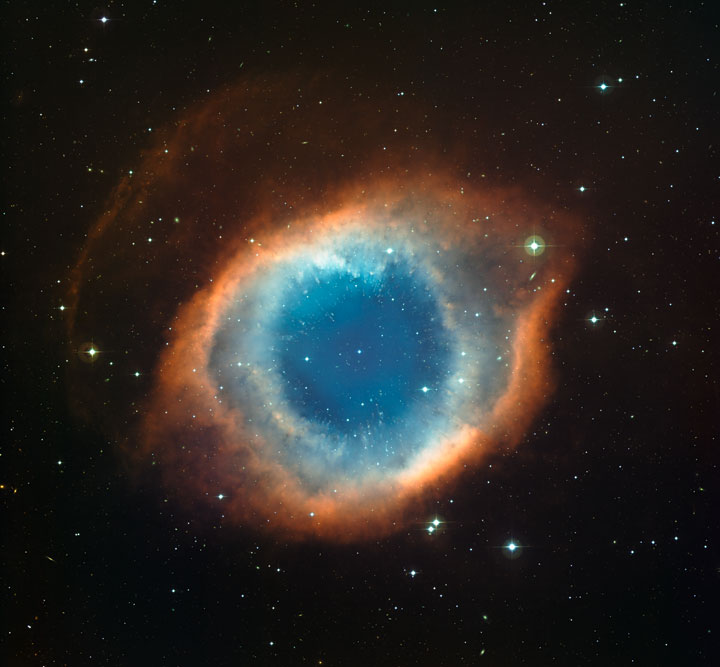Helix Nebula
650 light years

Image Credit: ESO
When stars like our Sun run out of hydrogen fuel in their central regions, nuclear fusion of helium nuclei becomes the primary energy source. This and other nuclear fusion processes produce even heavier elements such as carbon, nitrogen, and oxygen and the outer layers of the star begin to shed into space. In this image, the red color around the outer edges shows where hydrogen and nitrogen are more prominent. The blue-green glow at the center of this object, known as the Helix Nebula, comes from oxygen atoms energized by the intense ultraviolet light from the very hot star that remains in the center. As the name implies, ultraviolet light is more energetic than violet light of the visible range.
Listen to audio version (English)
Download high-res image file | Download caption as .zip file
Nebulosa de la Hélice - 650 años luz de la Tierra
Cuando las estrellas como nuestro Sol agotan su combustible de hidrógeno en sus regiones centrales, la fusión nuclear de núcleos de helio se convierte en la principal fuente de energía. Este y otros procesos de fusión nuclear producen elementos aún más pesados tales como carbono, nitrógeno y oxígeno y las capas externas de la estrella comienzan a arrojar material al espacio. En esta imagen, el color rojo alrededor de los bordes exteriores muestra donde el hidrógeno y el nitrógeno son más prominentes. El resplandor azul-verde en el centro de este objeto, conocido como la nebulosa de la Hélice, proviene de átomos de oxígeno que obtienen energía de la luz ultravioleta intensa de la estrella caliente que permanece en el centro. Como su nombre lo indica, la luz ultravioleta es más energética que la luz violeta del espectro visible.
Download high-res image file | Download caption as .zip file



